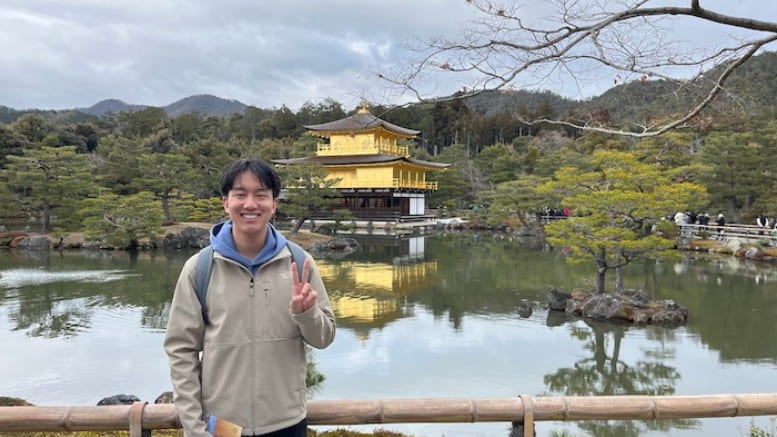Alumni Spotlight Q&A: Meet Nicholas Liou ’20
March 14, 2023

The Department of Asian Languages and Cultures celebrates its 10th anniversary this year. To commemorate this celebration, the department spotlights some of its alumni.
Nicholas Liou ’20 recently shared about his experiences in the Department of Asian Languages and Cultures, and the impact of those experiences.
Liou:
“I was an art history major at Northwestern (Class of ’20) and took my first ALC class with Prof. Gaubatz in the spring of my sophomore year, Early Modern Japanese Literature and Culture: 17th – 19th c., as a way to flesh out my art historical interests in Japan and East Asia more broadly. I went on to take Taiwanese New Wave Cinema with Prof. Byrnes and both of Prof. Noonan’s Japanese Cinema classes. As I decided to more seriously pursue Japanese art history, I also took Japanese language courses in the department my third and fourth years, studying with Taira Sensei, Sato Sensei, Sanga Sensei, and Shiojima Sensei. (I feel very fortunate to have been taught by all the Japanese language and culture professors when I was at Northwestern!)
All of these classes have informed my interest in and study of art history both when I was an undergrad and in my current graduate studies. During my senior year, I wrote an art history senior thesis about the photomontage of Japanese artist and graphic designer Kimura Tsunehisa and was able to access texts in Japanese because I took language classes. Currently I am a Mellon Curatorial Fellow at the Williams College Museum of Art (2021-2024) and a second year MA student in the Williams College/Clark Art Institute Graduate Program in the History of Art (Class of ’24). In the museum’s curatorial department, one of the projects I have been working on centers on an album of kabuki actor prints in the collection and has greatly benefited from my study of kabuki in Prof. Gaubatz’s class. In my academic work, I have recently started engaging with ecocritical art historical methods and wrote a paper last semester about director Naomi Kawase’s 2007 film The Mourning Forest, which I first watched and was completely taken by in Prof. Noonan’s class. In both of these examples and others, I have been able to go further with my research by reading sources in Japanese. After graduating, I’m also thinking about pursuing a PhD in art history and I’m confident Japan will continue to be a geographical focus of mine.
Most recently, I just returned from a three week long study trip in January co-leading the first year class of Williams Art History MA students to Japan with a professor in the College’s comparative literature department. We traveled to Kyoto, Nara, Naoshima, and Tokyo looking at everything from Buddhist statuary and traditional wooden architecture to postwar artistic movements and contemporary exhibitions. We also had the opportunity to attend a traditional puppet play (bunraku) and kabuki while we were there. It was an incredible trip of a lifetime for both myself and the students, and I feel so thankful to have had the opportunity to both plan and lead the trip.”
Arts & Humanities

Weinberg College faculty and graduate students recognized for excellence in teaching
July 2, 2025
Each year, the Weinberg College of Arts and Sciences and the Office of the Provost recognizes members of the College’s tenure-line and teaching-track faculty for excellence in teaching. Weinberg College in addition recognizes the contributions…

Passion for the planet: A new generation of environmental stewards starts here
May 29, 2025
Over the last two decades, the Weinberg College-housed Program in Environmental Policy and Culture (EPC) at Northwestern has embraced the humanities and social sciences and cultivated a new generation of environmental stewards. Growing up in…

MFA graduate bree gant on how several mediums shape her artistic practice
May 14, 2025
bree gant is in her studio in Locy Hall writing. Her words flow horizontally across the page, wrapping left to right down the page. Like movements in a dance sequence, the word order changes slightly…

2025 Convocation speaker Junta Nakai ’04 shows how grit and determination fueled his success in the tech world
April 14, 2025
Junta Nakai knows exactly how he got here. Here, is his position as the global vice president at Databricks, a San Francisco-based data analytics and artificial intelligence (AI) company. The globe’s sixth-largest startup, Databricks, was…



